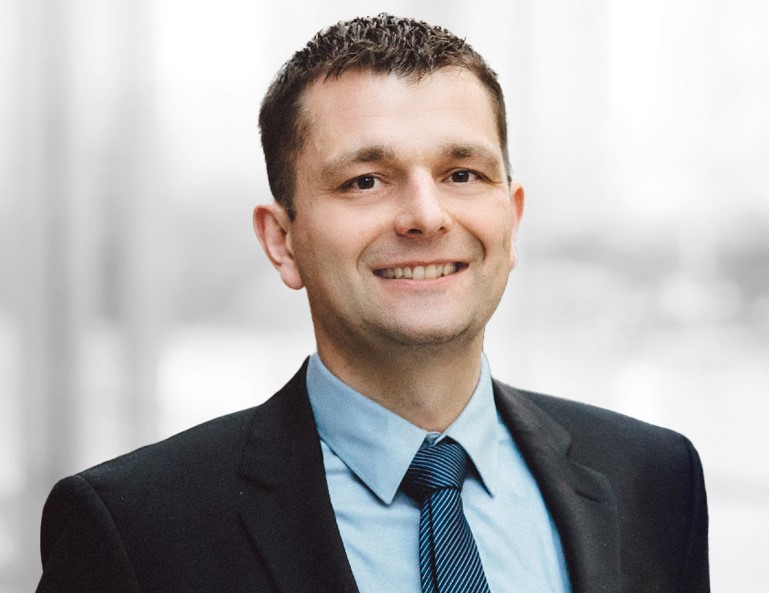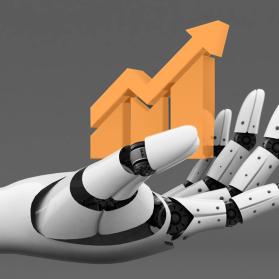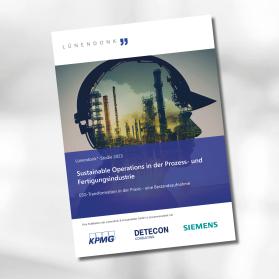Repair on site, complete replacement or onward journey to the workshop - how DB Cargo's "intelligent damaged wagon management (iSWM)" makes the right decisions in rail freight transport. An interview with Christian Kühnast, Project Manager iSWM, DB Cargo AG.
When you were a child, did you also count the wagons of passing goods trains and perhaps even derive from that the desire to work professionally with freight wagons one day?
I didn't count freight wagons, but as a child I had a large Lego city with an airport, railway station and port, so I could simulate the logistics and supply chains. Perhaps that indirectly contributed to my career aspirations. I'm still fascinated by railways today, even though I've been in it for 14 years now. Over the years, there has been a great potential for improvement in the area of freight wagons. At the moment, the railway is getting a considerable tailwind from politics and society, so that the transport turnaround can also be tackled. Various transports are increasingly being diverted from lorry to rail, for example. This in turn means fewer CO2 emissions and freer roads for passenger transport.
The German Federal Government's "Rail Freight Master Plan" referred to the digitalisation of the process chain in the maintenance of rail vehicles years ago (milestone 2.12). What has changed since then from your point of view?
In recent years, we have standardised and digitalised many things at DB Cargo. The master plan was another important external impetus to further accelerate our digitisation efforts in the Group. The "link2rail" platform, for example, digitises processes between customers and DB Cargo, and the "Asset Automatisation and Digitisation" (AAD) programme is designed to optimise internal operational processes - this is where we are located.
In the iSWM project, we place great emphasis on a holistic view of the process chains. The end-to-end context from writing damage to the car to putting it back into operation after the workshop visit is becoming more and more digital. The advantage is that there are fewer isolated solutions and the control can be optimised holistically across diverse process chains. Complex systems and their interactions are now easier to solve.

Your contact for Nordics Railway
We will present our offer in the field of digitalisation of rail operations at the Scandinavian Rail Optimisation Event in Stockholm on 9 November 2022.
Talk with our expert now:
Tim Herbstrith, Manager
mail: tim.herbstrith@detecon.com
phone: +43 1 50413000
What exactly is a damaged wagon and what were the reasons for you at DB Cargo to deal so intensively with the management of damaged wagons, was there anything in need of improvement beforehand?
A damaged wagon is a freight wagon that is defective - something is broken on the vehicle and needs to be repaired. Depending on how serious the damage is, mobile teams help to get the wagon running again. Afterwards, the vehicle can drive safely to a workshop and be used again.
The starting point for the "intelligent damage vehicle management" (iSMW) project was to increase the availability of the vehicle fleet for the customer. The aim was to reduce the then still very high downtimes in the event of damage. After the in-depth analysis, it was clear to us: the selection of workshops can be done more precisely and efficiently. The challenge is to determine which workshops are authorised for the respective repairs and wagon types, to what extent material is in stock and what the capacities of upstream and downstream production (e.g. shunting) are. Today, there is much more variability compared to the past - back then, the premise was: "Drive to the nearest workshop possible!" Today the central question is: "Which workshop is the right one"? This can be the nearest one as well as one far away.
Unexpected failures of a rail vehicle do not only entail financial risks. They also trigger a high organisational effort to eliminate them. What technologies and process changes do you use to counter such unpredictable situations?
When developing an IT system to support the damage wagon process, it was clear to us from the beginning that we needed a high degree of automation and a lot of data. The large number of 300-600 claims per day requires efficient control. Taking into account the unscheduled, spontaneous claims as well as scheduled maintenance, the workshop contacts were to be reduced in order to generate high availability in turn. This was a major challenge in the team.
In process workshops, we analysed, adapted and improved every single step together with the specialist departments and consultants at Detecon. From the writing of damage to the return to production to the renewed transport to the customer. As is so often the case, the system is only as good as it can be applied in practice. For this, process chains must be constantly adapted or built up and the users must be taken along.
How has the introduction of intelligent damaged wagon management affected the availability of the freight wagon fleet at DB Cargo? Is there a visible increase in availability compared to before, and by how much?
It is encouraging that since the start of the project until the end of 2020, around 24 % of avoidable dispositions to a "wrong" workshop could be avoided. For this year, we expect an increase to 30-33%. With several thousand dispositions to the workshop per year, this saving is enormously worthwhile. It is important to know that each wrong disposition to the workshop causes about ten additional days of absence. The system not only produces a higher availability rate and more transports with the same number of freight wagons, it also pays off in terms of profitability and sustainability of resource use.
If the complexity of the currently existing vehicle types is reduced to the unitary or modular freight wagon, for example, is the iSWM system then superfluous?
We will not have the modular freight wagon in all areas overnight. That is certainly increasing, but special wagons, e.g. car transport, cannot be imagined without for the time being. Therefore, our project is definitely not superfluous. By reducing it, it is probably even easier for the system. The important thing is that workshops are allowed to repair such a modular trolley in an authorised manner. Our goal will then again be to use the IT system to strive for the most even utilisation of the workshops. Certain test algorithms will be reduced in the future, if necessary. It remains exciting for us to be able to further shape this development.
What is the next step in wagon management? Should the process be expanded to include further functionalities and possibly also freight wagons from external wagon keepers? Or are other processes that precede and follow damage wagon management already in line for digitisation?
The internal benefit and gaining experience are our top priorities. The replacement of the old system has also been a project mission. We also want to transfer our iSWM community, which has been working on possible extensions, into regular operation. Furthermore, we are planning a preliminary study that will examine the prerequisites for using the IT system in DB Cargo's national companies as well. Making the system available to third parties is also not currently ruled out.
We also want to continue optimising the software. Machine learning based on our operational and master data collected in an internal data lake will make it possible to predict a preventive workshop visit in the future. In this way, we want to avoid unscheduled disruptions in the future.
Doesn't the iSMW also ensure even better customer orientation?
Our philosophy is to improve availability. This is felt above all by our customers. We are the steering link between the customer's wishes and the sales department for damage vehicle management and want to create added value for our customers through greater transparency.
To what extent is it apparent that the changes brought about by the use of digital technologies are also bringing about changes in culture?
Every new process change faces challenges at the beginning. We were not only able to implement processes, but also wanted to involve and empower our colleagues. The fact that we succeeded in doing this is ultimately also due to the fact that we founded an iSWM community that drives and reviews the important further developments in a constant exchange. In addition, we were able to ensure from the beginning that we involved all important stakeholders through the workshops. In general, we were lucky that the acceptance of the software grows with the satisfaction of the users. This was a great advantage for us.
Let's assume there was a "fairy godmother" in the management of the harmful wagon and you had three free wishes. What would you wish for her?
I would actually only have one wish: self-healing freight wagons. This would enable us to achieve the goal of guaranteeing the availability of our wagons at all times and we would no longer need our system.
Thank you very much for the interview!







